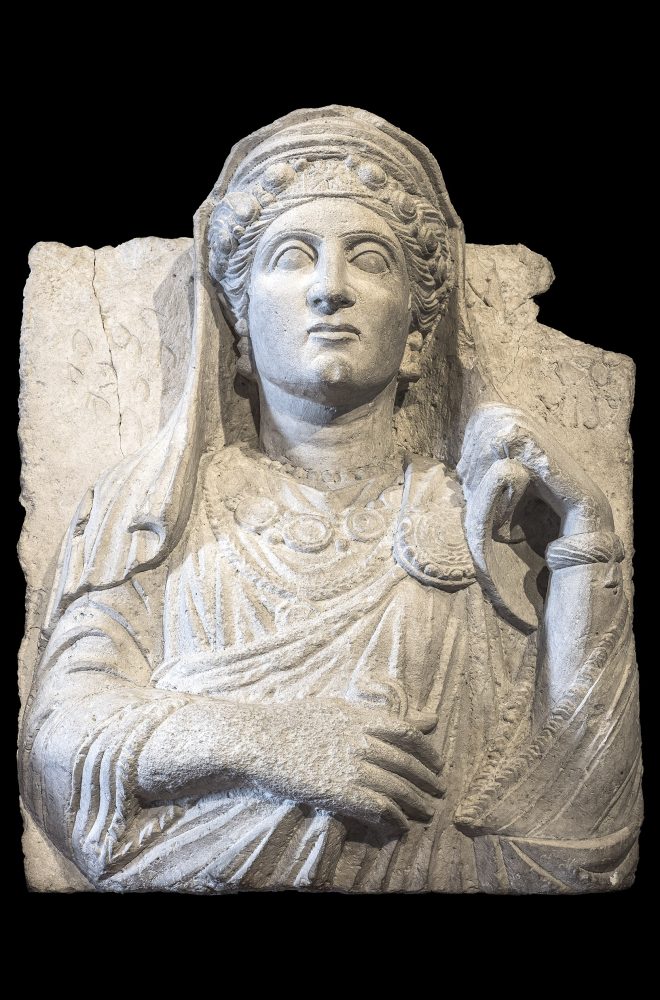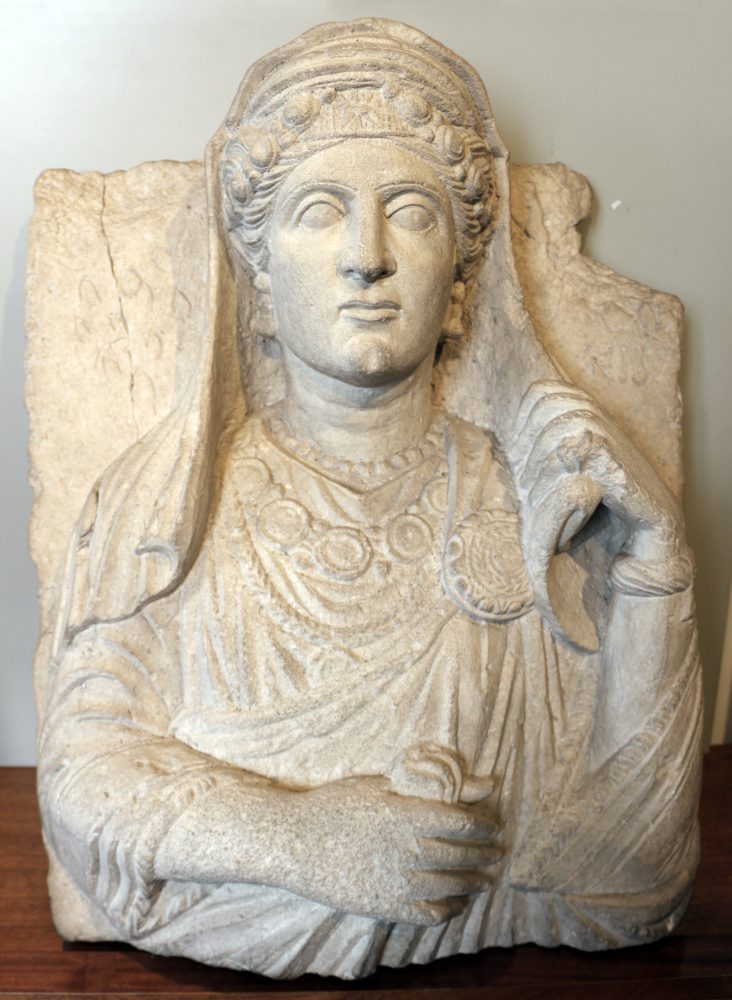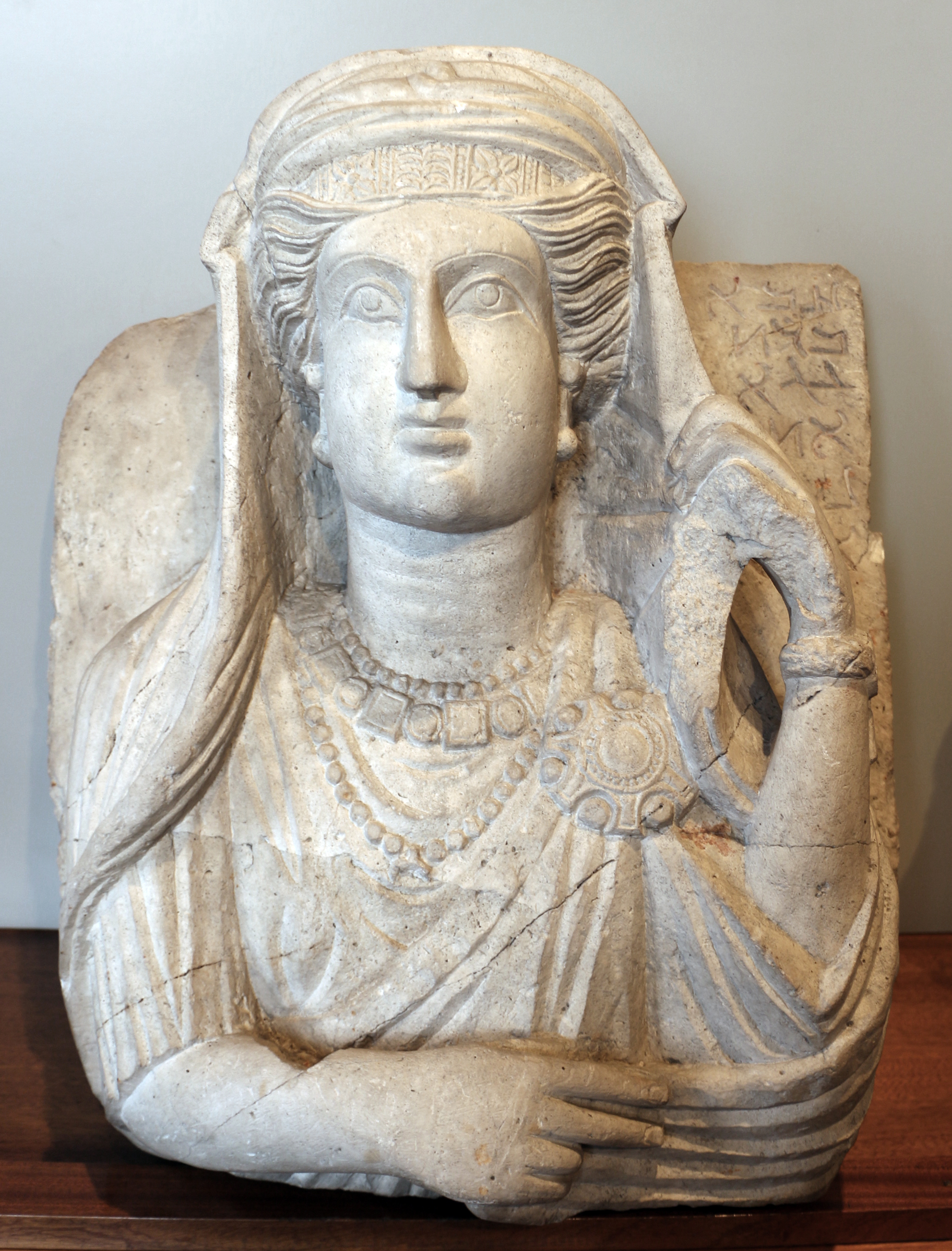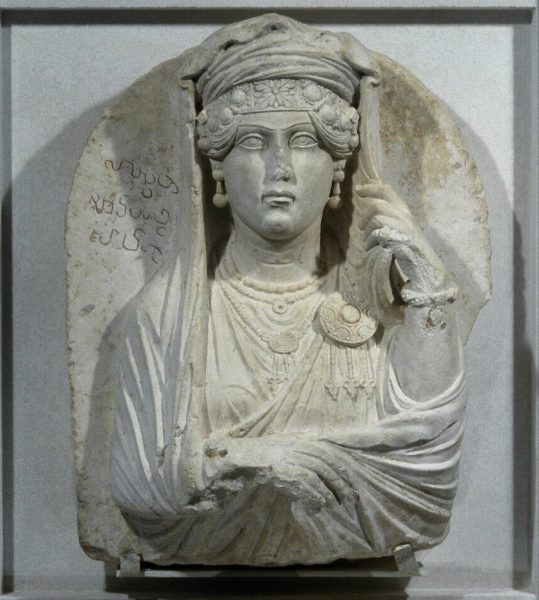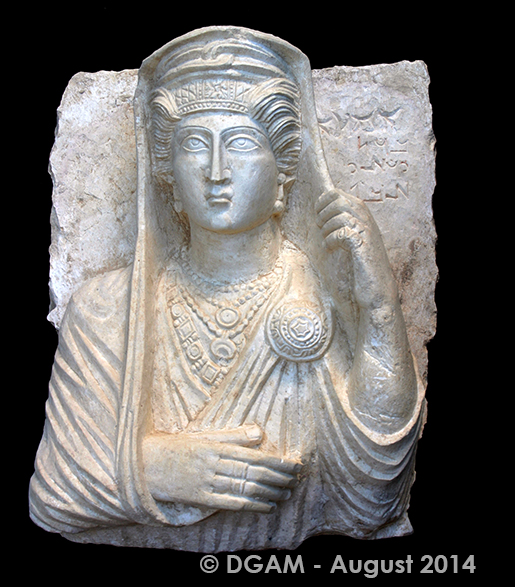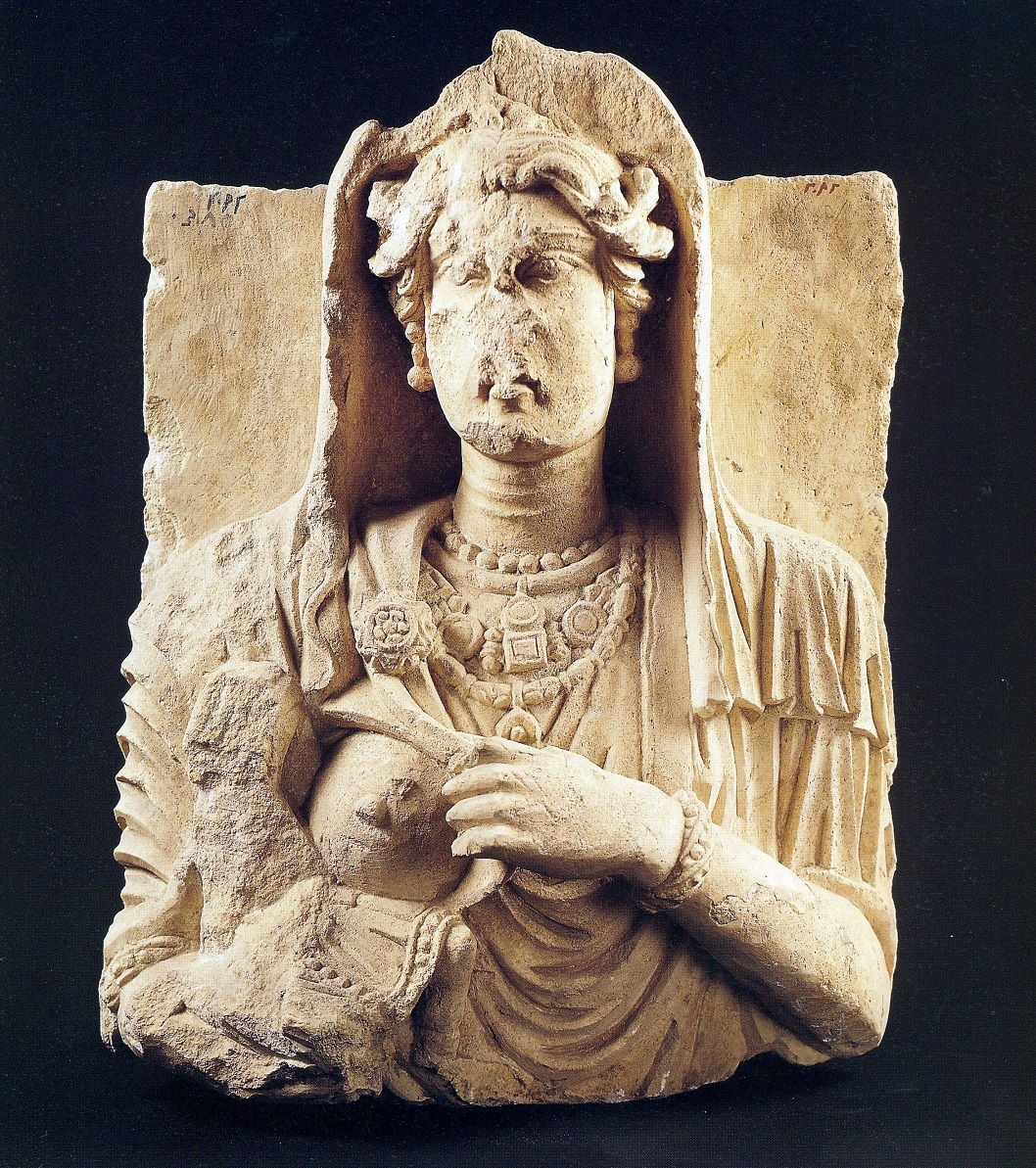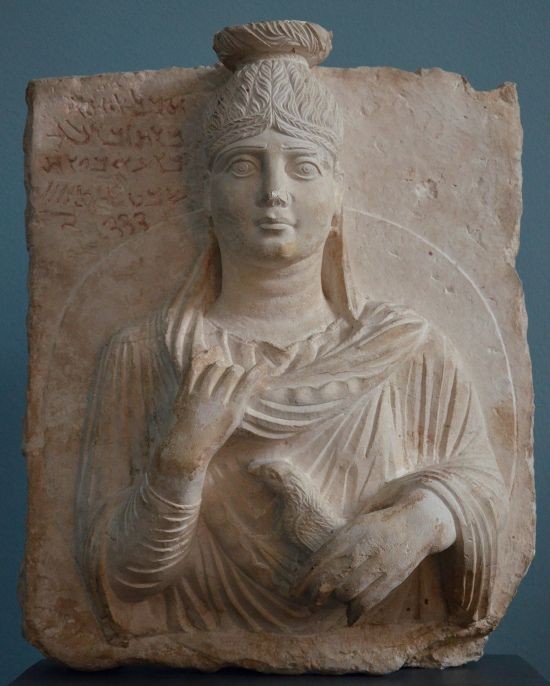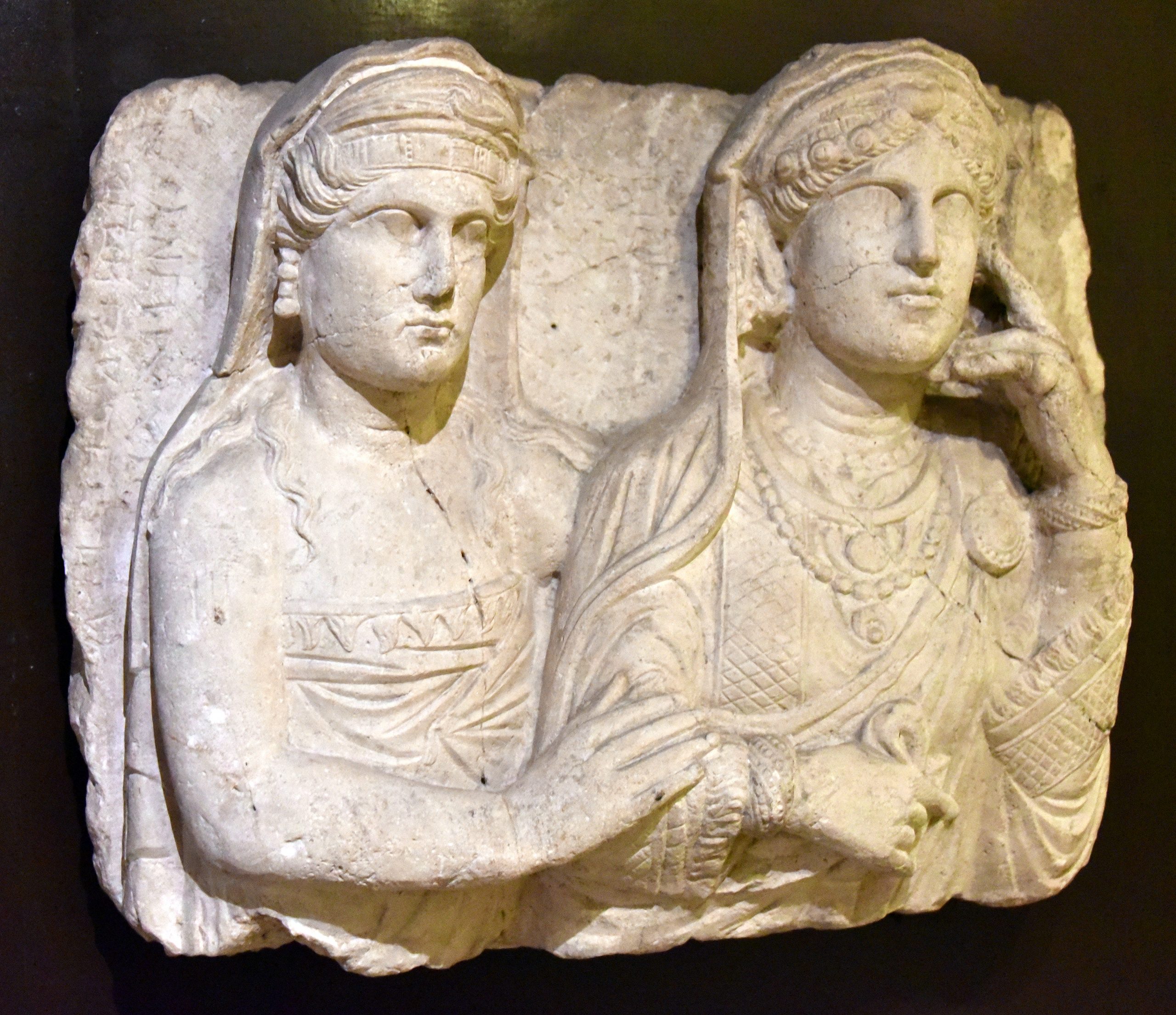Funerary relief of a woman, 3rd C, Palmyra. Woman has a full set of jewelry including a bracelet with a little bell. She wears a tunic dalmatic trimmed with fur.
Description from a publication “VOLTI DI PALMIRA AD AQUILEIA. PORTRAITS OF PALMYRA IN AQUILEIA” 2017; ISBN 978-88-492-3481-7 https://www.giornalediplomatico.it/file/voltidipalmiraadaquileia_catalogo.pdf
“The Palmyrene text inscribed on 4 lines above the left shoulder of the portrait – with line 1 and line 2 partially and entirely missing, respectively – indicates only the names of the male relatives of the woman, while the meaning of the graffiti on her right is indiscernible.
The portrait is seen frontally and has linear face features. her full oval face has a prominent chin and large eyes, with no indication of the irises, while the pupils are slightly concave, framed by the deep grooves of the eyebrows. Her neck is marked by two lines. Her left hand shifts the veil on her head to let a large fibula fastening the cloak onto her left shoulder be seen; her right arm is crossed under her breast, with the hand grasping a fold of the cloak. Her dress has wide fringed sleeves leaving her wrists bare.
The set of jewellery can be compared to a popular type in Palmyra between the mid-2nd and the mid-3rd centuries ad. It is characterized by the association of a diadem with a floral decoration, a head chain, a pair of earrings with a rod and two pearls at its ends, and a plate fibula. Three necklaces, a bracelet and a ring complete her jewellery set.
Soft swollen strands of hair are held in place by the diadem, whose floral decoration is divided into panels, and are wrapped in a sumptuous head chain consisting of round cabochons interspersed with rows of beads. Her hairstyle ends with a turban supporting the veil.
The fibula, shaped as a toothed wheel surrounded by tiny spheres, is extremely interesting, as it is a variant of the plate fibulas
dating from a period comprised between the late 2nd and the second quarter of the 3rd centuries ad.
The three necklaces are well spaced out, with the most conspicuous one, consisting of round medallions linked up by rows of beads, in central position between a pearl choker and a loop-in-loop chain with a medal pendant.
The simultaneous display of several necklaces was a typical habit in Palmyra, especially in the 3rd century ad, as well as wearing rings on all finger segments. in this case, the ring is worn on the second phalanx of the left little finger. The bell-shaped pendant hooked up to the bulky twisted bracelet on the woman’s left wrist was a very popular amulet in all Roman Syria.
The original context of this exhibit is not known, but its iconographic and stylistic characteristics help date it to the early decades of the 3rd century AD, a time of great development for the arts, architecture and urban layout of Palmyra. Beside the published references, some resemblance in the countenance and hairstyle, as well as overall style, can be remarked in the more sophisticated relief of Mezzabû, which has been dated to the 2nd quarter of the same century with the help of the relative chronology of Salamallat’s [Shalamallat] hypogeum to which it belongs.
The exhibit forms a group of three Palmyrene funerary reliefs belonging to the collection of baron Giovanni Barracco, whose ambition was to “create a small museum of comparative ancient sculpture”, as proclaimed in the first catalogue of 1892, where this relief is already included.
Bibliografia/Bibliography: G. BaRRacco,
W. helBiG, La Collection Barracco, München”
Dimension: 59 cm high; 46 cm wide
Date: early decades of 3rd century

